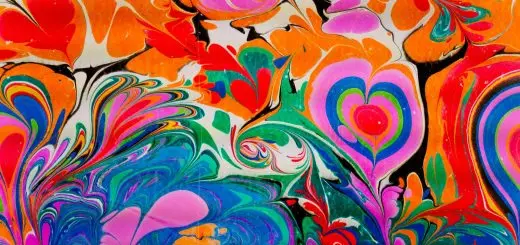Why Do Horses Sleep Standing Up? Explained

Looking for more amazing products? Check out our online store and explore our collection here! Happy shopping!
Before diving in, please note: This post is for informational purposes only. If you’d like to know more about how we approach topics, feel free to check out our friendly Disclaimer Page.
Hey there, amazing readers! 
We’re committed to delivering quality posts, and your support (even just sticking around despite the ads) means everything to us. So, bear with us, and thanks for helping us keep the good vibes rolling. Now, on to the fun stuff!
TRANSLATE BUTTON AT THE END OF THE ARTICLE
A Quick Overview
Have you ever watched a horse casually snoozing on its feet and wondered why?
Horses, unlike us, have some fascinating sleep habits that can leave anyone scratching their head.
In this article, we’ll delve into the reasons behind their sleeping patterns, explore their unique anatomy, and uncover the benefits of their ability to sleep while standing.
By the end, you’ll have a deeper appreciation for these magnificent creatures and their unique nighttime rituals.
Understanding Horse Sleep Patterns: An Introduction
Horses experience two main types of sleep: slow-wave sleep (SWS) and rapid eye movement (REM) sleep.
Interestingly, SWS can occur while they are standing.
This might seem strange to us, but it’s crucial for their survival in the wild.
You see, horses are prey animals.
If they lie down and fall into a deep sleep, they become vulnerable to predators.
Therefore, being able to doze while standing is a built-in survival mechanism.
Typically, horses sleep for about 4 to 15 hours a day, but this is not continuous.
They take short naps throughout the day, and the amounts can vary greatly depending on their environment and level of security.
When they feel safe, horses may lie down for longer periods, which is essential for them to enter REM sleep.
This state is where they dream and truly recharge.
You might see your horse resting its head on a fence post or the ground.
This is another sign of relaxation and a precursor to deeper sleep.
It’s a comforting posture, and it shows they feel safe in their surroundings.
So, if you catch your horse having a snooze while standing, it’s a completely natural behavior!
The Unique Anatomy of Horses: Why Standing Matters
A horse’s body is specifically adapted for life as a prey animal.
One of the most notable features is their legs.
Horses have a special locking mechanism in their legs, which allows them to stay upright without exerting much energy.
This feature, known as the stay apparatus, enables them to relax their muscles while remaining standing.
Imagine a tightrope walker who can balance without focusing too hard on their footing!
The stay apparatus consists of several tendons and ligaments that lock the joints in place.
This means that even as they doze, they can maintain their posture and respond quickly if danger arises.
It’s like having a built-in alarm system!
Their long limbs and robust bone structure also contribute to their ability to stand for extended periods.
But what about their muscles?
Horses have a unique muscle composition.
Their muscles can relax while still holding tension, allowing for rest without compromising their ability to react.
Discover "Dog Care: Learning How to Care for Your Furry Friend
"
This anatomical marvel is one reason why we often see them resting on their feet.
The History of Horses: Evolution and Sleep Habits
To understand why horses sleep standing, we need to look back in history.
Horses evolved from small, forest-dwelling creatures over millions of years.
As they adapted to open grasslands, their survival depended on being able to flee from predators.
Sleeping while standing became an essential trait, and it’s one that has been passed down.
Fossils suggest that early horses, like the Eohippus, were small and not very fast.
However, as they evolved, their size increased, and so did their speed and agility.
The ability to sleep standing allowed these horses to remain alert and escape threats.
Even today, domesticated horses carry this instinctual behavior.
When horses were first domesticated, they still retained these traits.
Farmers and riders noticed that horses often slept standing, and there was little need to change this behavior.
It became part of their natural rhythm, and we’ve come to accept it as normal.
The Benefits of Sleeping While Standing Up: A Closer Look
Sleeping while standing has some impressive benefits for horses.
First and foremost, it allows them to remain vigilant against potential threats.
In the wild, being able to escape quickly can make all the difference.
This behavior has been ingrained through generations, and it offers a crucial survival advantage.
Moreover, standing sleep helps preserve energy.
Horses are large animals that require a considerable amount of food to sustain themselves.
By napping while standing, they save energy that would otherwise be spent lying down and getting back up.
This is especially important for horses in the wild, where energy resources can be scarce.
Additionally, this method of resting allows horses to maintain social connections.
In a herd, horses will often take turns resting while others remain alert.
This communal behavior fosters strong social bonds and cooperation among the group.
Lastly, sleeping while standing helps reduce joint strain.
Lying down for long periods can put pressure on joints and muscles.
By resting upright, horses can give their bodies a break without adverse effects.
How Horses Achieve Rest: The Role of the Stay Apparatus
Horses rely heavily on their stay apparatus to achieve rest while standing.
This fascinating system of tendons and ligaments allows them to lock their joints in place.
When a horse stands still and feels secure, they can relax their muscles while keeping their legs in a stable position.
The stay apparatus works through a combination of anatomical features.
The patella, or knee cap, can lock in place, holding the leg steady.
The ligaments and tendons work in tandem to provide support, allowing the horse to let its guard down just enough to rest.
Imagine trying to balance on one foot while watching a movie.
It would be quite the challenge!
Horses, however, can maintain their balance effortlessly.
This not only helps them sleep but also allows them to respond swiftly to any sudden movements in their environment.
While the stay apparatus is a remarkable adaptation, it doesn’t mean horses can sleep deeply for long periods while standing.
They still need to lie down to enter REM sleep, which is crucial for cognitive function and overall health.
Common Misconceptions About Horse Sleep Behavior
There are many myths surrounding how horses sleep.
One common misconception is that horses can sleep standing for extended periods.
While they can doze off while upright, they cannot achieve deep sleep for long without lying down.
A horse may stand and rest for short intervals but will need to lie down for REM sleep.
Another myth is that horses sleep less than other animals.
In reality, horses’ sleep needs can vary significantly.
Some horses may sleep more than others depending on their environment, security, and health.
People also often believe that horses do not dream.
Studies show that they do enter REM sleep, which is when dreaming occurs.
Just like us, they process their daily experiences during this stage.
Finally, there’s a belief that horses must always feel safe to sleep.
While feeling secure is important, horses can take quick naps even in less than ideal situations.
Their instincts and adaptability allow them to catch some shut-eye, even in a busy barn or field.
Understanding REM Sleep: When Horses Do Lie Down
REM sleep is a fascinating part of a horse’s sleep cycle.
While they can achieve slow-wave sleep while standing, REM sleep requires them to lie down.
This deeper sleep phase generally lasts only about 30 minutes at a time.
Why is REM sleep so important?
During this time, horses process information, consolidate memories, and recharge their cognitive functions.
Without enough REM sleep, a horse may become lethargic or show signs of stress.
Typically, horses will lie down to sleep for 15 to 20 minutes at a time, several times a day.
They may choose a comfortable spot in their stall or pasture to rest.
Observing your horse in a deep, relaxed state can be a comforting sight, knowing they are recharging for the adventures ahead.
When horses lie down to sleep, they often assume a particular position.
You might see them curled up with their legs tucked under or lying flat on their side.
This behavior can be a sign of trust in their environment, as they feel secure enough to expose themselves while they rest.
The Importance of Safe Spaces for Horse Sleeping
Creating a safe and comfortable environment is essential for a horse’s sleep quality.
Horses are naturally cautious animals.
If they feel vulnerable, they may avoid lying down, leading to sleep deprivation.
Providing a secure shelter can significantly enhance their sense of safety.
Barns, paddocks, and other structures can offer protection from predators and harsh weather.
Familiar companions also play a crucial role.
Horses often feel safer and more relaxed in the presence of their herd mates.
Additionally, a clean and comfortable bedding area can encourage resting.
Ensure that their sleeping area is free of debris and has soft bedding, like straw or shavings.
This not only promotes comfort but also encourages them to lie down for deeper sleep.
It’s also vital to keep their environment consistent.
Sudden changes in surroundings can create stress, affecting their willingness to sleep soundly.
Regular routines are comforting to horses.
Finally, observing your horse’s behavior can help identify any potential issues affecting their sleep.
If your horse seems restless or overly alert, it may be time to reevaluate their environment and routine.
Signs That Your Horse is Getting Enough Rest
It can be tricky to gauge whether a horse is getting enough sleep.
However, there are a few signs to look for.
A well-rested horse displays calmness and alertness.
If your horse seems relaxed when you approach, that’s a good indicator!
You can also observe their energy levels.
A horse that gets enough rest will be lively and responsive during riding or training sessions.
If they seem lethargic or disinterested, it may be a sign they aren’t getting the sleep they need.
Pay attention to their grazing habits as well.
A horse that feels rested will often graze contently and exhibit normal behavior.
Conversely, if they seem anxious or pace a lot, it may indicate they are not getting adequate rest.
I also recommend checking for physical cues.
A well-rested horse typically has a shiny coat, bright eyes, and a healthy posture.
If your horse’s coat looks dull or they appear tense, it might be worth exploring their sleeping habits further.
Lastly, keeping a consistent routine can help improve sleep quality.
Horses thrive on routine, so establishing a regular feeding and exercise schedule can play a significant role in their overall rest.
How to Ensure Your Horse Sleeps Well and Stays Healthy
To promote healthy sleep for your horse, start by ensuring they have a safe, clean environment.
A secure barn or paddock can significantly enhance their sense of safety.
Make sure you keep their space tidy, as a clean area allows for more restful sleep.
Next, consider their social interactions.
Horses are herd animals, and having a companion can help them feel more secure.
If you have multiple horses, ensure they can interact safely.
A buddy can provide comfort during naptime.
An appropriate diet also impacts a horse’s sleep quality.
A balanced diet rich in high-fiber forage can lead to a healthier digestive system, which, in turn, contributes to better rest.
Avoid sudden changes in diet, as this can lead to discomfort and anxiety.
Regular exercise is vital too.
Horses need physical activity to expend energy and stay healthy.
Incorporating daily exercise allows them to feel relaxed and satisfied, promoting better sleep.
And don’t underestimate the power of routine!
A regular schedule can help your horse feel more secure and relaxed.
Consistent feeding, exercise, and turnout times create predictability, which is comforting for them.
If you notice your horse struggling to rest, don’t hesitate to consult with a veterinarian.
They can help determine if underlying health issues are affecting your horse’s sleep habits.
Fun Facts About Horses and Their Sleeping Habits
Horses are remarkable creatures with plenty of fun quirks.
Did you know that horses can sleep both standing up and lying down?
While they favor standing sleep, it’s essential for them to lie down to enter REM sleep.
Another interesting fact is that horses can sleep with one eye open!
Their brain can rest while keeping one eye alert to potential threats.
This is a fascinating adaptation that highlights their nature as prey animals.
Did you know that horses can sleep for short intervals throughout the day?
This behavior allows them to remain vigilant while still getting the rest they need.
Horses have a unique ability to adapt their sleep patterns depending on their surroundings and level of security.
Horses can also enter a state of deep relaxation called "deep sleep." This is different from REM sleep and can occur when they feel completely safe.
During this state, they may even snore!
Finally, horses usually have a favorite napping spot.
They often choose a specific area in their paddock or barn that feels comfortable and secure.
If you observe your horse, you might notice their preferred napping location!
Conclusion: Appreciating the Sleep of Our Equine Friends
Understanding why horses sleep standing up gives us insight into their behavior and well-being.
Their fascinating anatomy, evolutionary history, and unique adaptations all come together to create this remarkable ability.
As horse lovers, it’s our responsibility to provide a safe and comfortable environment that promotes healthy sleep patterns.
By paying attention to their needs, we can help ensure our equine friends enjoy restful and rejuvenating sleep.
So, the next time you spot a horse catching some z’s while standing tall, remember the rich history and adaptations that make it possible.
They may be snoozing, but they’re still ready to gallop away at a moment’s notice!

The Enlightenment Journey is a remarkable collection of writings authored by a distinguished group of experts in the fields of spirituality, new age, and esoteric knowledge.
This anthology features a diverse assembly of well-experienced authors who bring their profound insights and credible perspectives to the forefront.
Each contributor possesses a wealth of knowledge and wisdom, making them authorities in their respective domains.
Together, they offer readers a transformative journey into the realms of spiritual growth, self-discovery, and esoteric enlightenment.
The Enlightenment Journey is a testament to the collective expertise of these luminaries, providing readers with a rich tapestry of ideas and information to illuminate their spiritual path.
Our Diverse Expertise
While our primary focus is on spirituality and esotericism, we are equally passionate about exploring a wide range of other topics and niches 

To ensure we provide the most accurate and valuable insights, we collaborate with trusted experts in their respective domains 
Our blog originally focused on spirituality and metaphysics, but we’ve since expanded to cover a wide range of niches. Don’t worry—we continue to publish a lot of articles on spirituality! Frequently visit our blog to explore our diverse content and stay tuned for more insightful reads.
Hey there, amazing reader! 
Check out our store here and take a peek at some of our featured products below! Thanks for being awesome!










